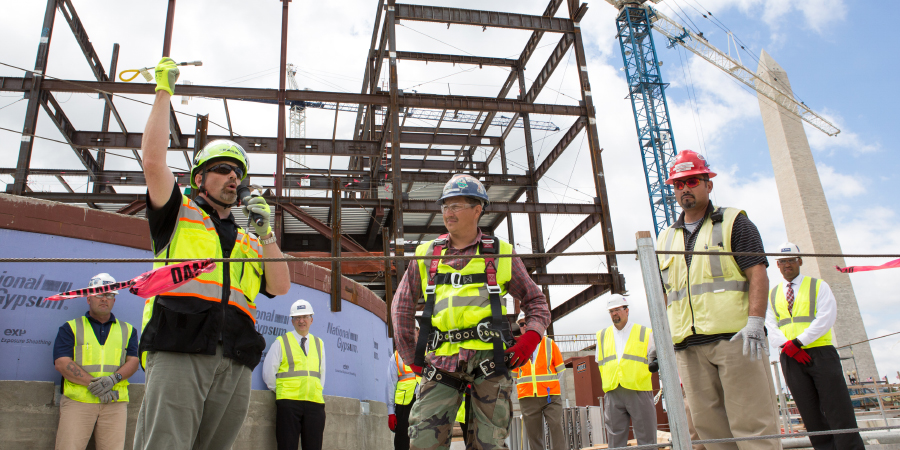Actionable intelligence for Safety officer

Safety thought leadership needs backing up with a to-do list. This list in context of Indian organizations has a bigger chance to fail. Deadline oriented workmanship versus safety-oriented workmanship’ are set and pitched against each other. Across our industrial and construction engineering domain.
The mindset has a lot to do with our behaviour and how we think as a collective. In an earlier article, behaviour-based safety has been put under lens of practical approach and on-ground reality. In this article, we would try to assert certain practicable points which safety officer ought to follow for better and safer outcomes.
Get safety on ‘the’ agenda
For action, its resultant response and consequences need to be fully understood. Just like having a carefully designed lifting plan to enable a complex lift ensures better success ratio and lesser accidents. Safety officers need to sink their teeth to keep a firm grip of statutory compliance and the ways and means for their workplace to achieve it. This starts with planning, policy research and coining solutions. The adherence isn’t merely about reading from a book provided via legislation but to get equal footing with engineers and workers into problem solving.
This lifts confidence of workforce and provides positive intent to management. Both of which are crucial to safe working, and therefore, a safety officer becomes an interface and interlocutor enabling safer ideas.
Safety must have ideas
Enabling safer ideas also means conceiving safer and better ideas which can implement problem solving, at workplace. While budgets, red tape and poor workforce attitude can be part of policy setback. Thought setbacks, like lack of discipline knowledge, due diligence and working relationship at workplace can affect safety, equally.
Safety officer needs to be the voice of logic and reason. Trained within their discipline of studies and an astute observed with the right amount of discretion. As safety veterans would say, safety is more intuitive than work itself. The mere act of living is a testament of safety by humanity. Therefore, logic and reasoning take the front seat with the safety officer tapping away at the little unsafe aspects to figure out more and more.
Safety means savings
Here’s a real-world example which took place alongside a busy highway, next to which a new construction project was coming up fast. The contractor due to their obligation of providing canteen/food facilities to its workers, convinced a large food shop right alongside the highway to start serving them. The shop obliged and the works were directed to take their break at the said canteen. However, the shop was located across the highway, a busy one at that too. So, the workers had to cross this busy highway, each time they had a break or went for refreshments and tea. To top this risk of crossing the highway each time, for several hundred workers was another cost: time.
Each worker was allowed a break of 15-20 mins several times over the day and on some days, doing the round across the highway canteen, sometimes consumed as much as 30-45 mins. The sheer traffic volume made it nearly impossible to cross the highway, without delay.
The safety officer requested the supervisor to reconsider this current position and relocate the canteen facility (since it was mainly operating on their request) on the same side as them. The supervisor saw little wisdom in this unforeseen cost. A new setup, time consumed in finishing that meant it would be inaccessible and hence the idea was dismissed.
The safety officer went on to prepare a small report on his due diligence behind the idea of canteen relocation, below provided are the calculations which he did as part of the cost estimation caused by these delays.
Number of workers = 2000
Daily wages for labourer = 320/day (semi-skilled)
Allotted time for break = 20 mins (avg.)
Actual time for break = 45 mins (avg.)
Wasted time = 25 mins
Wages lost (wasted time) per day/ worker = INR 16.66
Project duration estimate = 2 years (600 days)
Monetary loss due to aggregated time loss:
(Wages lost/day/ worker) * (number of workers) * (project duration)
16.66*2000*600 = 1,99,92,000 (Nearly 2 Crore INR)
The scale of the problem quickly becomes apparent to us as we delve a level deeper into the cost, time and efficiency numbers. Needless to say, the presented case was accepted by the supervisor and the canteen was relocated. This saved time money and the exposure to the risk of crossing a highway for all the workers at the site.
Elementary and concise thinking is what the safety officer demonstrated to the supervisor. Sometimes, it isn’t about the stubborn nature of management. But simply the implication of not seeing past the choices of sunk cost.
On-the-spot thinking and precise reasoning with measurable outcomes as part of the solution can always trump inane decisions that challenge workplace.



Nice to read your blog regarding actionable intelligence for safety officers. It was interesting to read the report on safety measures.